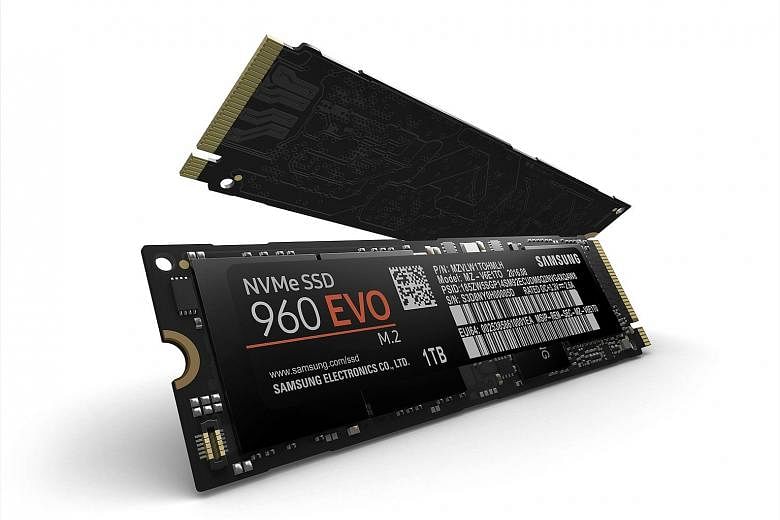The Samsung 960 Evo is the more affordable of the two solid-state drives (SSDs) that the South Korean company launched recently.
Unlike the 960 Pro ($459 for 512GB) that I tested last month, the 960 Evo is priced at $349 for the 500GB model.
Samsung is able to achieve a lower price point for the Evo by squeezing more data bits into each memory cell.
The Evo uses 3-bit MLC Nand flash memory, which basically means that each cell stores three bits of data. The Pro version stores two bits of data per cell.
In other words, for the same number of transistors, the Evo holds more data than the Pro. This explains why the Evo is cheaper.
Of course, there are performance downsides to storing more data in each cell. But based on the specifications provided by Samsung, and our benchmarks, the differences seem minor and are likely indiscernible to end users.

For instance, the 960 Pro scored 3,431MBps (sequential read) and 1,956MBps (sequential write) in the CrystalDiskMark 5 benchmark.
In the same test, the 960 Evo managed 3,344MBps (read) and 1,862MBps (write). In most real-life scenarios, such as copying a Blu-ray movie, these differences will probably be a matter of seconds rather than minutes in the time taken to transfer the data.
The PCMark 8 Storage benchmark, which runs apps such as Adobe Creative Suite and measures the disk performance, showed the 960 Evo scoring 5,072 compared with 5,100 for the Pro.
-
TECH SPECS
PRICE: $179 (250GB), $349 (500GB), $669 (1TB)
INTERFACE: PCIe 3.0 x4
WARRANTY: 3 years
RATING
FEATURES: 4/5
PERFORMANCE: 4/5
VALUE FOR MONEY: 4/5
OVERALL: 4/5
Again, this difference is probably negligible in real-life situations - both SSDs will feel similarly responsive and quick.
Other features on the 960 Pro - for instance, the Polaris controller and the copper heat spreader - are also present on the 960 Evo. But the Pro tops out at 2TB capacity compared with 1TB for the Evo.
Also, Samsung offers a five-year warranty for the Pro model, compared with three years for the Evo.
It is worth noting that Samsung has stated that its warranty will expire if the amount of data written to the SSD exceeds a certain figure, even if the SSD has not reached the end of the warranty period. This figure, which is a measure of write endurance, is expressed in terabytes written (TBW).
The 960 Pro (512GB) is rated at 400 terabytes written while the 960 Evo (500GB) is 200 terabytes written. Basically, this means the 960 Pro will probably last you twice as long as the Evo.
In short, if you are a heavy user running apps that constantly write to the SSD, you should be picking the 960 Pro for its superior write endurance.
The mainstream user, however, will get more out of their dollar with the Evo.
Vincent Chang
•Verdict: A fast and cheap SSD that is perfect for mainstream users.


